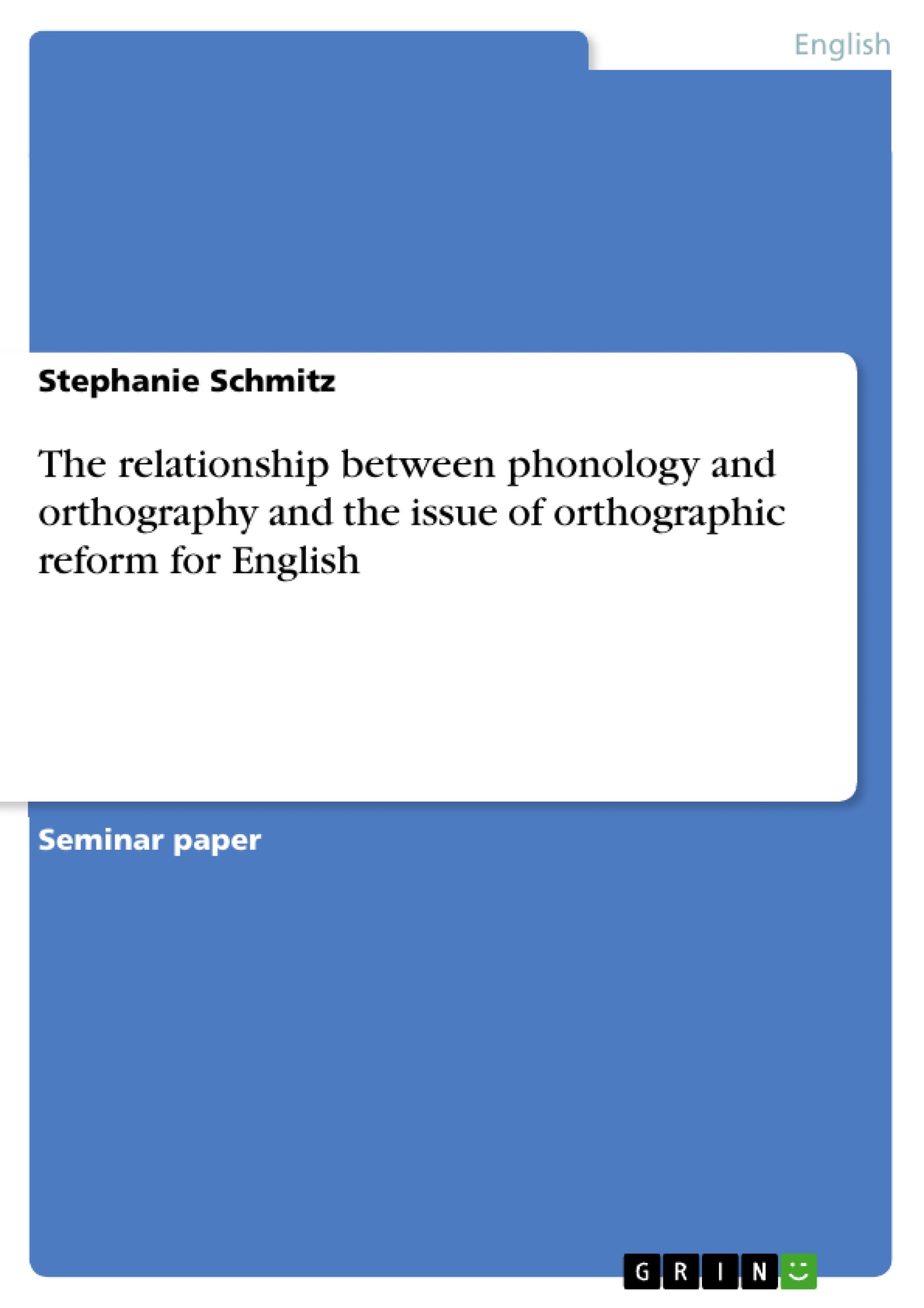Phonological developments in English after the standardization of the orthography and their consequences for the relationship between phonology and orthographyThis essay first explains what sound change is and then describes differences between Middle English and New English concerning consonant and especially vowel patterns due to the Great English Vowel Shift. Then the standardization of the orthography and phonological changes after the 17th century are discussed. Finally, the results of these changes for the relationship between phonology and orthography today are depicted. Sound change is referred to modifications in the language that lead to the introduction or loss of phonological elements (Lehmann 1992: 183). Sound change means a modification of distinctive features of the phonemes (Lehmann 1992: 191). Today sound changes are mostly indicated by means of distinctive features rather than by means of rules as it was in earlier times, because an indication by means of distinctive features is more precise. Generally, a sound can change in its place or manner of articulation, in the position of the velum or in its glottal articulation (Lehmann 1992: 191-193). Furthermore, changes may take place in the characteristic features of a vowel, i.e. in the degree of vowel opening, in the degree of fronting or in the labial articulation (Lehmann 1992: 193-194). A sound change can either be conditioned or unconditioned. Within a conditioned change an allophone of a phoneme changes only in a specific environment and stays the same in all others, whereas within an unconditioned change, a phoneme changes in all possible environments, which happens very seldom (Lehmann 1992: 190-191). Simple treatments of sound changes are normally unrealistic, i.e. to assume that all phonemes /x/ have become /y/ at time z (Lehmann 1992: 190). Usually a tabloid which shows that each phoneme /x/ became /y/ and each phoneme /y/ became /z/ depicts only the most common cases. But often a change is restricted to a certain environment and does not take place in others. Changes can be interpreted as addition, as alteration or as loss of a feature. Accordingly, when changes are described by rules they are described as rule addition, rule loss or rule recording. (Lehmann 1992: 204-205). A “sound change only occurs when there is a disruption of the phonological system”. This disruption may take place by two mechanisms, either by merger or by split. [...]
Table of Contents
- Phonological developments in English after the standardization of the orthography and their consequences for the relationship between phonology and orthography
- Sound change
- The Great English Vowel Shift
- The standardization of English orthography
Objectives and Key Themes
This essay examines the impact of phonological changes on the relationship between English pronunciation and spelling, particularly in the context of the Great English Vowel Shift and the standardization of the orthography. The essay explores the nature of sound change, the historical evolution of English pronunciation, and the implications for written language. It aims to provide a comprehensive overview of the historical development of English orthography and its relationship with sound change.
- The nature of sound change and its mechanisms
- The Great English Vowel Shift and its impact on English pronunciation
- The standardization of English orthography in the 17th century
- The relationship between phonology and orthography in contemporary English
- The influence of Latin loanwords on English spelling
Chapter Summaries
- The first chapter introduces the concept of sound change, explaining its mechanisms and defining key terms such as allophones, phonemes, and distinctive features. It also discusses the different types of sound change, including conditioned and unconditioned changes, as well as the processes of merger and split.
- The second chapter focuses on the Great English Vowel Shift, a significant period of phonological change that occurred in the 15th century. The chapter details the changes that affected Middle English long vowels, explaining how they were raised or diphthongized. It also acknowledges the relative stability of short vowels and consonants during this period and highlights the persistence of some Middle English vowel pronunciations in certain words and dialects.
- The third chapter examines the standardization of English orthography in the 17th century, tracing the transition from a period of near-anarchy in spelling to a more predictable system. The chapter discusses the role of printers and correctors in the standardization process, as well as the influence of phonetic research on the development of spelling rules. It highlights the lasting impact of this standardization on the English language, particularly in terms of the adoption of Latin-based spellings.
Keywords
The main keywords and focus topics of this essay include sound change, phonology, orthography, the Great English Vowel Shift, standardization, Middle English, New English, phonetics, and Latin loanwords. The essay explores the complex interplay between these concepts, highlighting the historical development of English pronunciation and spelling, as well as the enduring relationship between these two aspects of language.
- Quote paper
- Stephanie Schmitz (Author), 2003, The relationship between phonology and orthography and the issue of orthographic reform for English, Munich, GRIN Verlag, https://www.grin.com/document/57888



